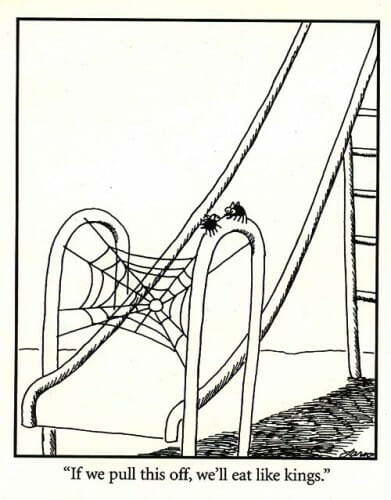I am back in the USA, but I am missing my daily dose of cricket each evening. I found watching cricket incredibly relaxing in the evening. Despite common perception, it is not a difficult sport to understand -- it just has a vocabulary all its own.
This is actually a pretty big week in British cricket, as the biennial Ashes matches between Australia and England begin on Wednesday. Apparently, Australia has pretty much owned England over the years, with the exception of an exciting victory by England four years ago. The only way I have found to watch it in the US is via a pay internet site associated with Sky TV. Anyone have any better ways?
Cricket for American Baseball Fans
As a public service, here is my quick description of cricket in terms American baseball fans will understand. This will leave out some details and arcana (just as one can easily describe the basics of baseball without mentioning catcher interference or running on a dropped third strike). Commenters are free to get all over me with exaggerated anger for any small mistakes I make. Note that I purposefully am using some American baseball terms for things in order to make the translation easier.
The cricket field is a large oval (of varying sizes) with two wickets or stumps about 66 feet apart in the middle of the field (about 6 feet longer than the distance from an American pitching mound to home plate) (picture). Think of the two stumps as two home plates separated by a single base path. This is a useful way to think of it because herein we get to the part that is most confusing to Americans: At any one time, there are two batsmen, one at each end. And, there are two bowlers (the equivalent of pitchers), again one on each end. If you think of it as two home plates, each with its own batter and pitcher alternating play, you get the idea.
Play progresses in a series of overs, which is 6 balls or pitches in a row. A single bowler will bowl 6 balls, or one over, from his end, and then play reverses and the other bowler at the other end will bowl six balls. This continues until all the batters on the team are out (more in a minute). As in baseball, bowlers get tired and get replaced over time. Much like high school or little league baseball, bowlers are not specialists but are fielders who are rotated in and out of the bowling position from the field. Again, just like American baseball, bowlers can be straight ahead speed specialists or they can be spinners (ie throw a variety of curving balls). Bowlers generally bounce the ball into the batsman (though they don't have to), as they can then take advantage of funny hops off the uneven playing surface and because the bounce can accentuate the effects of spin. Unlike American pitchers who are fixed to a spot on the mound, cricket bowlers can make long running starts to their bowling.
Since there are two batsmen, whoever is facing the current bowler is the active batter. In addition to the bowlers and the keeper (like an American catcher) there are 9 fielders dispersed 360 degrees around the batter. Only the catcher wears something like an American-style leather glove -- all the other fielders are bare-handed.
OK, here is the second thing that befuddles American baseball fans: Batsmen continue to bat and score runs until they are out - even if this takes hours and scores of pitches. There are no ball and strike counts that limit the time batting. If the batter hits a short ground ball to a fielder, a sure out in American baseball, he does not have to run in cricket and therefore cannot get out. And once he hits and gets some runs, he still keeps batting. These are all differences from American baseball.
When the batsman gets a hit, he has a choice to run. If he chooses to run, both he and his partner (remember there are two batsman at a time) run to the opposite stump. Making it safely is one run. If the ball is hit well enough, he may run back and forth for more than one run. If the ball rolls all the way to the "outfield" wall, it is automatically scored as four runs. If the ball clears the "outfield" fence on the fly (the equivalent of an American home run) it is automatically 6 runs.
Note that if the batter runs an even number of bases, he ends up back at the stump where he started and he will be the one to face the bowler on the next pitch. If he scores an odd number of runs, the other batsman will now face the bowler. There is some strategy involved in this, as it gives the batting team some leeway to determine which of its two batters will face the current bowler.
There are a number of arcane ways to get a batter out, but the most common are the following:
- Bowled: The ball hits and breaks the wicket. First and foremost, then, a batter is defensive. He needs to make contact with any ball that is headed for the wicket. If any part of the batsman hits the wicket (eg he hits it with his bat or with his leg while running) this is also an out.
- Leg before wicket (LBW): If the ball hits the batters leg, and the referee rules the ball would have hit the stump, the batter is out
- Run out: When the batter chooses to run (and this is a choice) he can be "thrown out" in baseball parlance if a fielder throws the ball back and hits the stump (or someone tags the stump with the ball) before the runner gets back to the wicket (the equivalent to a force-out in baseball). I have not watched a lot of cricket, but I have never seen anyone run out. Batsmen tend to be pretty conservative in going for runs this way, as a single out is far more devastating than in American baseball so they take fewer chances. Its better to live and bat some more than try to stretch out a single extra run. Particularly since a good batter can score 50 or even 100 runs in a single at-bat (or inning) before getting out.
- Caught: If the batter hits the ball in the air and it is caught, the batter is out. There are several fielders typically concentrated just behind the batter as catching the equivalent of an American foul tip backwards (there is no foul territory in cricket) seems a particularly rich source of caught balls.
Batters therefor face a tension. They must guard the wicket at all costs, and the safest way to do so is to hit a lot of ground balls to avoid being caught out. But the batter also needs to score, and so must sometimes take some chances in order to score runs by putting the ball in the air. The best batters seem to be the ones who can hit the ball hard on the ground and consciously seek out gaps in the fielders. The best equivalent in baseball I can think of is batters who are good at hitting the infield gaps on hit and run plays.
An inning is the process of having an entire team bat and be put out once. In a test match, typically over four days, each team might have two innings. There are a number of rules variations that might end innings sooner on time or number of overs.
A note on scoring: When watching TV, they still flash a lot of stats I do not frankly understand. But the most common will be a score after a test match might say England was 292 and 165. This means they had 292 runs in their first innings and 165 in their second. For an inning in progress, the score will look something like this: 164-4. This means that the team batting has so far scored 164 runs and has had four batsmen put out.
There are many other unique terms (I personally like "maiden" as a particularly apt term for a no-run over) but I think this is a good start. There is a lot of arcana in test cricket I don't yet understand, but none of it stops me from enjoying the games. Enjoy. That is, if one could ever get any cricket on American TV.







